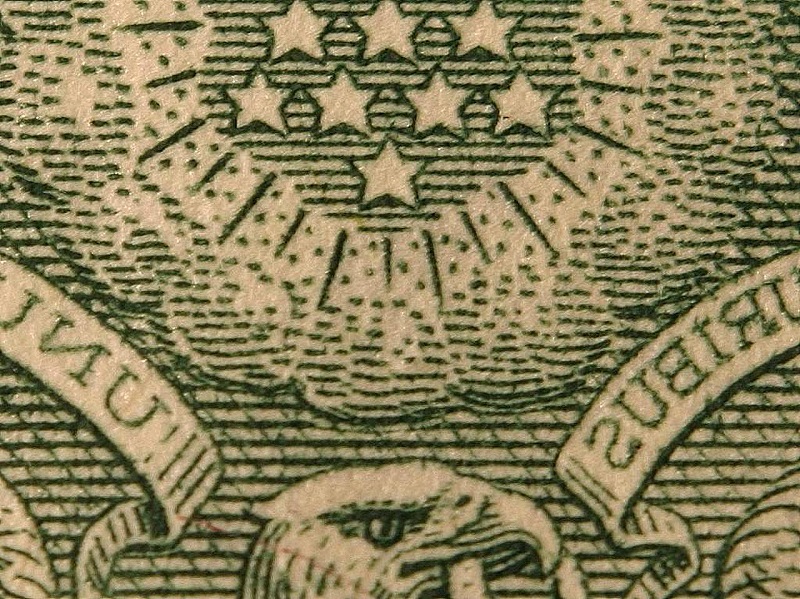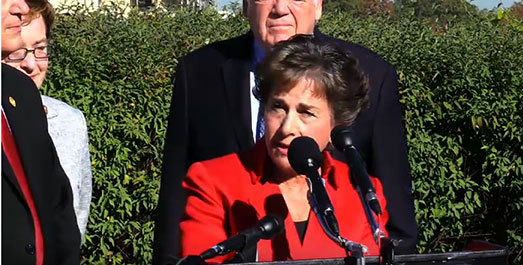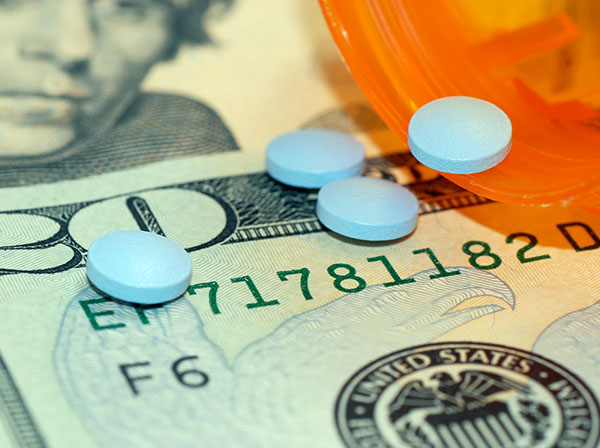by Gabriel Levitt, President, PharmacyChecker.com and Prescription Justice | Dec 17, 2015 | Drug Prices, Generic drugs
 I’m talking about super-sized supermarket Publix, which operates over 1000 stores throughout the Southeastern U.S. Sure, it’s not the only superstore to offer this but I happened to come across its Free Medication Program while researching drug prices today: and I want to talk about it.
I’m talking about super-sized supermarket Publix, which operates over 1000 stores throughout the Southeastern U.S. Sure, it’s not the only superstore to offer this but I happened to come across its Free Medication Program while researching drug prices today: and I want to talk about it.
There’s a lot of yelling and screaming and downright hostility toward the pharmaceutical industry (much of it warranted), including against generic drug companies, who are under scrutiny because some old generics have increased in price by thousands of percent. So here’s a little relief…free medication.
The list is not long but the following drugs are free at Publix pharmacies: Amlodipine, Lisinopril, and Metformin. Bring your script and walk out with a 90 day supply free. If you’re prescribed a 14-day antibiotic treatment of Amoxicillin, Ampicillin, Sulfamethoxazole/Trimethoprim, Ciprofloxacin (but not its XR version) and Penicillin VK – free at Public Pharmacies.
Now most of us don’t live near a Publix. Very low cost and free drug programs at U.S. retailers and chain pharmacies were launched almost a decade ago when Walmart announced its $4 prescription drug programs. The programs are still around and a report is long overdue about them. I promise to bring you a broader list of these free medication programs in the New Year.
Why would a pharmacy offer medications for free? If you’re looking for a full explanation, here’s some good journalism in Toledo’s The Blaze from 2006. It has something to do with the medication being a “loss leader” for the company. Then again, who cares – the meds are free.
Tagged with: affordable prescriptions, Amlopidine, Amoxicillin, Ampicillin, Ciprofloxacin, Drug Prices, Lisinopril, local pharmacies, Metformin, Penicillin VK, Publix, retail pharmacies, Sulfamethoxazole/Trimethoprim, United States
by Gabriel Levitt, President, PharmacyChecker.com and Prescription Justice | Dec 11, 2015 | Controlled Drugs, Drug Prices, Online Pharmacies

Sleeping Woman by Gyula Derkovits [Public domain], via Wikimedia Commons
A friend of mine, let’s call her Bertha, who is on Medicare Part D, is prescribed and takes Zolpidem. For most of the year, she only had to make a co-payment of about $3 at her local pharmacy. Then, a couple of months ago, the same pharmacy told Bertha that the price jumped to $46 for a one-month supply because her Part D plan had annual quantity restrictions for that medication.
So Bertha went to PharmacyChecker.com, typed in Zolpidem, then clicked 5mg, and read the following:

Why not? Because Ambien (Zolpidem) is a controlled medication, meaning one subject to abuse, and we don’t allow online pharmacies that sell controlled medication internationally in our Verification Program. Rogue online pharmacies, domestic or foreign, might offer to sell you this medication without a prescription but don’t buy it: you’re risking your health by doing so. Even if they sell you the real thing, we strongly recommend not using controlled drugs without a prescription on or offline. The good news for Americans is that, if they shop around, the generic version of Ambien can be very affordable at the corner pharmacy. Prescription discount coupons often make them even more affordable. A new feature on PharmacyChecker.com (that is still being tested so be patient) can help…and so our story continues.
Under the notification “Online pharmacies in our program do not offer Zolpidem”, Bertha read the following
“But if you’re in the U.S., you can compare drug prices at your local pharmacies using a prescription discount card or coupon.”
She then clicked the “Search U.S. Local Pharmacy” button (see example below)–

–typed in her zip code and compared neighborhood pharmacy prices that are only available using a prescription discount coupon. She discovered that the cash price with the coupon was only about $10 – much better than the $46 she would have had to pay without insurance. She went to her local pharmacy and filled the script with no problems.
Like most Americans, Bertha has health insurance and a prescription drug plan. Unfortunately, tens of millions still do not. For them, if they get a script for Ambien, the savings can be even more dramatic with a prescription coupon or discount card. For example, I found at least one pharmacy charging $159 for a one-month supply of Zolpidem 5mg! Against that price, finding it for ten bucks with a coupon is a savings of $149/month or 94%!
If you’re still awake after reading this, I’m going to throw you a curve ball: there is a lot of controversy about prescription sleep medication, including Ambien, related to overprescribing, side effects, and questionable benefits. I found a good article about it in the New York Times and I recommend it. But if you get that prescription from your healthcare provider for Ambien, and are ready to fill it: go local, not international and check local pharmacy prices on PharmacyChecker.com.
Tagged with: Ambien, controlled drugs, discount drug cards, local p, verified pharmacies, Zopidem
by PharmacyChecker.com | Dec 4, 2015 | Drug Prices, Online Pharmacies
When you think about skincare products, you might not consider them the most crucial medications. But while some skincare medications are more cosmetic, many also treat conditions that are painful, unpleasant, or can have serious consequences. Unfortunately, prices for this class of medications have been rising rapidly, outpacing inflation and salaries, at a time when many Americans are facing out-of-pocket medication costs.
According to a new study by the American Medical Association’s JAMA Dermatology, between 2009 and 2015 many widely prescribed medications in this class increased in price by 200% or more. In fact, two of the drugs in this study, Targetin gel and Carac Cream, increased by nearly 1,700%! Even those medications with less spectacular increases such as Solaraze gel, Clobex Spray and Benzaclin increased between 146% and 325% during the same period.
Benzaclin, which is widely considered one of the best acne treatments, costs on average $503.85 at local U.S. pharmacies according to the JAMA study. But that same medication can be purchased from a verified international online pharmacy for $71.76, a savings of 86%. A 4.25 oz bottle of Clobex Spray, which treats a form of severe psoriasis, was found to retail for an average of $958.01. At an online pharmacy you could find the same amount of that medication for $293.07, a 69% savings. And while the same study found Solaraze gel, which is used to treat actinic keratosis, a type of precancerous skin growth would costs $1,883.98 for those forced to pay out of pocket, that same medication could be purchased online for $170, or 91% less!
| Drug |
Strength |
Price Rise 2005-2009 |
Retail Pharmacy |
Online Pharmacy |
Savings |
% Savings |
| Solaraze gel |
100 g |
325% |
$ 1,883.98 |
$ 170.00 |
$ 1,713.98 |
91% |
| Benzaclin |
50 g |
202% |
$ 503.85 |
$ 71.76 |
$ 417.47 |
86% |
| Clobex spray |
4 oz |
146% |
$ 958.01 |
$ 293.07 |
$ 664.94 |
69% |
| *Based on purchase of 177mL (6 oz.) bottle of Clobex spray for $414.99 at an online pharmacy. |
Whether treating acne, psoriasis or lesions, taking care of the largest and most visible organ in the human body should leave you comfortable in your skin, not feeling skinned alive.
by Gabriel Levitt, President, PharmacyChecker.com and Prescription Justice | Nov 20, 2015 | Advocacy, Drug Importation, Drug Prices, FDA, Government

Today, as the Obama administration hosted a “public” forum (think invitation only) about pharmaceutical innovation, access and affordability, I announced the formation of a non-profit organization dedicated to helping Americans get justice when it comes to prescription drug prices: Prescription Justice Action Group (PJAG). Whereas the administration’s public forum ignored personal drug importation, PJAG is providing guidance to Americans on what to do if their prescription drug orders are refused import by the FDA so they can try to have their medications released.
For about fifteen years, tens of millions of Americans have purchased medication from outside the U.S. –usually ordering it online. They do it because they want to save money or they really cannot afford the medication here at local pharmacies. The fact is that it has become a lifeline of lower cost medications for Americans.
But a new law – Section 708 of the Food and Drug Administration Safety and Innovation Act – gives the FDA expanded powers to destroy your personally imported medications, whether bought from a Canadian, Indian, Turkish or U.K. pharmacy. That doesn’t mean they will. It just means that they can. That law became effective over a month ago, and we haven’t heard of increased FDA seizures and destructions of international prescription orders.
The FDA has stated, and we have re-affirmed on our blog and main website, that under most circumstances it’s technically illegal to import prescription medication for personal use. But is it really? Is it always?
Section 708 allows the FDA to detain and potentially destroy your prescription order if it appears to be misbranded, unapproved, counterfeit or adulterated. If they take your adulterated or counterfeit drugs then the FDA has done their job. Misbranded or unapproved drugs, in contrast, could be entirely safe and effective medications, the same or foreign versions of the ones you buy in the U.S., but much less expensive. Under Section 708, you must be notified by the FDA if they take your prescription drug import, and you have 20 days to challenge them on their action. PJAG, in consultation with legal advisers, believes that you can make a good case that FDA should not destroy the medication but instead send it to you.
There are many dangerous online pharmacies out there from which you don’t want to buy or import medication. We call them rogue online pharmacies. But if you import a genuine, safe and effective medication, one that was purchased from a PharmacyChecker.com-approved online pharmacy and you get a notification from the FDA telling you that your prescription drug order is subject to destruction…PJAG!
Tagged with: affordable prescriptions, Drug Importation, FDA, Food and Drug Administration Safety and Innovation Act, international pharmacies, Online Pharmacies, pjag, Section 708
by Gabriel Levitt, President, PharmacyChecker.com and Prescription Justice | Nov 6, 2015 | Drug Importation, Drug Prices, Generic drugs, Government

Americans should know about the heat coming down against the pharmaceutical industry from certain members of Congress in an effort to combat the public health crisis of high drug prices. This week, nine lawmakers from the House of Representatives announced the formation of a new group called the Affordable Drug Pricing Task Force. Its goals are clear, to lower cost barriers to life saving medication and to demand greater transparency about drug cost decisions made by the pharmaceutical industry.
Two pertinent facts were continually raised. One, high drug prices are the No. 1 healthcare issue in America. Two, medication prices are much lower in other countries, about 50% lower in the UK.
To announce the task force, a press conference was led by Congressman Lloyd Doggett (D-TX) and included speeches by Rep. Sander Levin (D-MI), Rep. Jan Schakowsky (D-MI), Rep. Jim McDermott (D-WA), Rep. Rosa DeLauro (D-CT), Rep. Peter Welch (D-VT), Rep. Marcy Kaptur (D-OH), Rep. David Cicilline (D-RI), and Congressman Elijah Cummings (D-MD). We wrote about Rep. Cummings’ efforts a couple of weeks back as Congressman Cummings noted PharmacyChecker.com as a supporter of the Prescription Drug Affordability Act of 2015. I also want to note thank Congresswoman DeLauro for recently becoming a co-sponsor of the Personal Drug Importation Fairness Act of 2015.
The speakers have supported a variety of solutions to lowering drug prices, including allowing Medicare to negotiate drug prices with pharmaceutical companies; ending “pay-for-delay,” a practice sometimes described as payoffs by brand drug patent holders to generic drug companies to that the latter will postpone launching a lower cost generic; reforming prescription drug importation laws to make it easier to access lower cost medications from other countries; and greater oversight into pharmaceutical industry pricing practices.
Some highlighted quotes or phrases:
- “If the people are not able to afford their prescriptions that means they suffer and in some instances they die.” Rep. Cummings.
- McDermott’s take: “The pharmaceutical companies have got the Congress in the palm of their hand and they will not let us go.”
- The problem of high drug prices was referred to as an “emergency situation” by Rep. Sander Levin.
It’s no secret that I support much of this agenda. But what is needed is bipartisanship, and I’m waiting for these leaders, as part of their noble effort, to consider looking critically at the Obama administration’s record on personal drug importation and online pharmacies. Candidate Obama in 2007 supported reforming the law to make it easier for Americans to import lower cost medication. Unfortunately, in its efforts to pass the Affordable Care Act, which I supported, the Obama administration made a deal with big pharma to change course and dump drug importation legal reform in exchange for pharma’s support for Obamacare and agreement to new discounts on Medicare Part D medications through the coverage gap (the “Donut hole”).
On that final note, the Obama administration, though the Department of Health and Human Services (HHS), has announced a forum on drug prices to be held on November 20th. Maybe we’ll learn that the Obama administration’s position on prescription drug importation has returned to one more in line with most Americans. We’ll keep our fingers crossed.
(You can view the complete press conference below)
Members of the newly formed Affordable Drug Pricing Task Force will hold a press conference announcing meaningful action to combat the skyrocketing costs of pharmaceuticals. Who: Reps. Cummings, Doggett, McDermott, DeLauro, Schakowsky, and Welch.
Affordable Drug Pricing Task Force Press Conference – Nov 4, 2015
Tagged with: Affordable Drug Pricing Task Force, Congress, David Cicilline, Drug Importation, Elijah Cummings, generic drugs, Jan Schakowsky, Jim McDermott, Marcy Kaptur, Online Pharmacies, Personal Drug Importation Fairness Act, Peter Welch, Rosa DeLauro, Sander Levin, United States
by Gabriel Levitt, President, PharmacyChecker.com and Prescription Justice | Oct 30, 2015 | Drug Prices, Medicare Drug Plans

We’re two weeks into the open enrollment period of Part D Medicare Drug Plans and it is my deepest hope that if you are a Medicare enrollee then you are taking time to find the best plan. It’s not easy. Finding the right plan, however, could mean getting the medications you need to stay healthy, saving money, and avoiding lots of headaches throughout the year. Our website, MedicareDrugPlans.com, gives you basic information, such as premiums, deductibles and coverage levels, but also ratings and reviews about Part D plans that can inform you about the experiences of your peers in using the different plans. Your final search should be with the government’s website – Medicare Plan Finder – where you can find the plans that cover the medications you are already taking now and specific costs related to those plans. Below are key points about costs and coverage.
Part D Plan Costs
Plan costs have gone up this year. The deductible cap increased by 12.5%, from $320 to $360. Fifty-three percent of the plans are charging the full deductible, while the other 47% charge less. Average premiums have increased from $36.68 in 2015 to $41.46 in 2016. The lowest monthly premium is $6.80, that’s if you live in Puerto Rico and choose the Humana Preferred Rx Plan. The highest premium is $174.70, that’s if you live in Florida and choose Blue MedicareRx Option 2.
Part D Plan Choices
The overall trend of having fewer Part D plans to choose from continues this enrollment season, down to 886 this year compared to 1001 last year. Looked at historically, the declines are even more striking, as there were 1,875 plans in 2007. These numbers are the totals available in all states and U.S. territories but options are really state-based. Alaskans had only 19 plans to choose from, compared to a high of 29 in West Virginia and Pennsylvania.
Part D Plan Coverages Phases
There are four coverage phases for Part D plans: deductible, initial coverage period, the coverage gap, often referred to as the “donut hole,” and catastrophic coverage. The deductible is pretty straightforward–you pay the full cost of your medications up until that dollar amount, which can be as high as $360. During the initial coverage period, you usually pay about 25% of drug costs and the plan picks up 75% until total costs have reached $3,310. At that point you’re in the coverage gap, but you’re paying discounted prices, 45% and 58% of brand and generic drug costs, respectively. Once total costs have exceeded $7,515, you are in catastrophic coverage territory, and only have to pay 5% of your total drug costs until the next year begins.
Understanding these generalities about Part D plans is important, but the devil is in the details, which can only be understood through research. It’s not enough to just stick with the plan you have. Nine out of 10 Medicare enrollees do not change plans, and many end up with higher drug costs because they don’t. The landscape of plans changes every year; so do your research, shop around, and get the best plan for your health and wallet!
For a thorough plan analysis see Kaiser Family Foundation.
For ratings and reviews, check out www.medicaredrugplans.com.
To finalize your decision go to Medicare Plan Finder.
Tagged with: donut hole, Kaiser Family Foundation, Medicare Drug Plans, Medicare Part D, medicare plan finder, Medicare.gov, medicaredruglans.com
 I’m talking about super-sized supermarket Publix, which operates over 1000 stores throughout the Southeastern U.S. Sure, it’s not the only superstore to offer this but I happened to come across its Free Medication Program while researching drug prices today: and I want to talk about it.
I’m talking about super-sized supermarket Publix, which operates over 1000 stores throughout the Southeastern U.S. Sure, it’s not the only superstore to offer this but I happened to come across its Free Medication Program while researching drug prices today: and I want to talk about it.







